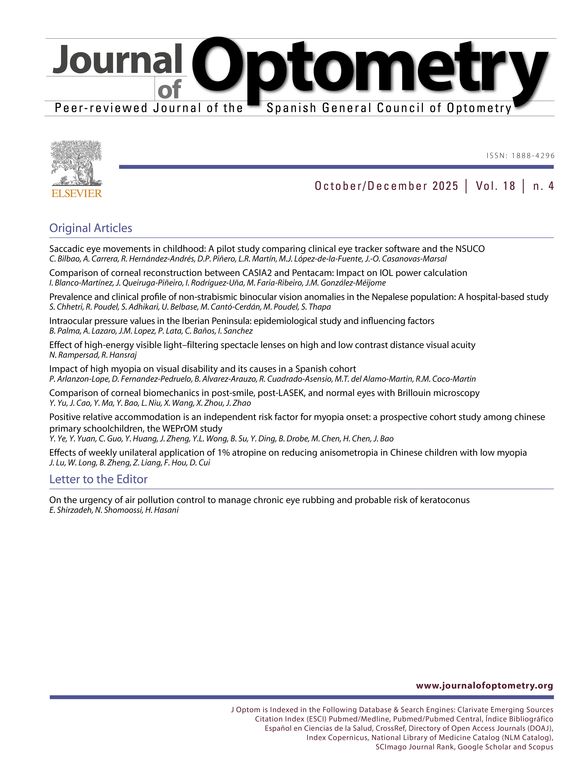We have read the Letter sent to the Editor related to our previously published article entitled "Utility of Retinoscopy To Examine Peripheral Refraction"1 written by Gladson Joyse Stanly. We appreciate your interest of our work. Undoubtedly, the role of peripheral refraction in myopia development and progression in children is not entirely clear, and further studies are needed.
Although animal studies showed that peripheral hyperopic defocus may play an important role in axial elongation and myopia development, human studies provided rather conflicting results. The link between peripheral hyperopic defocus and myopia progression in children is still under debate.
However, we would like to mention that in our study we did not investigate the influence of peripheral refraction (PR) on myopia development and progression in children. The primary aim of our study was to investigate whether retinoscopy may provide valuable and comparable results of peripheral refraction (PR) to open-field autorefractometry. In addition, we examined only adult subjects. Thus, other aspects mentioned by Gladson Joyse Stanly such as myopic prediction based on peripheral hyperopic defocus were out of scope of our study. Based on our results, one may only speculate that both retinoscopy and open-field AR may be a useful technique for objective examination of peripheral refraction. With respect to Hoogerheide et al.2 study, we have only stated that "…the first link between peripheral defocus and myopia onset was suggested by Hoogerheide et al."
Since the currently available optical methods designed to myopia control are based on peripheral defocus modification, reliable and readily available methods of PR examination are desirable. Thus, we agree that more research is needed to establish the influence of PR and especially the relative peripheral hyperopia on myopia progression and development in children. We are convinced that retinoscopy will be a helpful technique for peripheral refraction examination, both in clinical practice and research studies.








